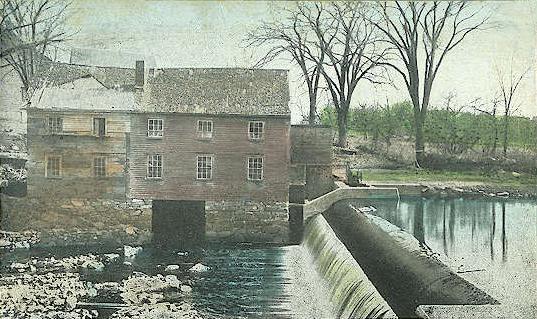Opinion Piece Published in the Portsmouth Herald/Seacoastonline.com
Excerpt:
“As science-based conservation organizations with long and deep roots in the Durham community, we want to express our unqualified support for the Durham Town Council’s recent vote to remove the Mill Pond Dam – the head-of-tide dam that prevents the natural flow of water between the Oyster River and Great Bay Estuary.
A dam was first constructed on the Oyster River in 1649 to run small mills in a colonial settlement. For the first time in thousands of years of human history in the region, there was no ebb and flow between fresh water of the Oyster River and the tidal water of the Great Bay Estuary. The many species of fish and wildlife that migrate between the two could no longer move freely from river to sea through the different phases of their life cycles. Sediment flowing from the landscape built up behind the dam, unable to be scoured from the river channel in heavy rains. Water quality worsened in the Oyster River as the Mill Pond became shallower, warmer, and more depleted of life-giving oxygen.
As centuries passed, multiple iterations of the original dam helped drive the economy of the town and the region, but the dam that remains today provides no power, it is structurally deficient, and is considered a hazard by regulators. Head of tide dams such as the Mill Pond Dam would not be built today -the ecological damage caused by such dams is well documented. The Mill Pond Dam continues to create a barrier between fresh water and tides, it blocks migratory fish passage, and it contributes to the impairments in water quality that are recognized by the NH Department of Environmental Services and US Environmental Protection Agency (USEPA).
The Great Bay Estuary is one of 28 places recognized by the US EPA as “an estuary of national significance”. There are many municipalities and organizations throughout our region – including Conservation Law Foundation, The Nature Conservancy and the town of Durham– that have been working together for years as part of the Piscataqua Region Estuaries Partnership to restore and protect the rivers and bays of this special place. Through science and research, education, legal advocacy, land conservation and habitat restoration, we are collaborating to reverse the downward spiral in the Estuary. While we have much more work to do, we are making headway. The removal of barriers in the estuary, like the Great Dam in Exeter, Sawyer Mill Dam in Dover, and Crommet Creek culvert in Newmarket, are all major milestones on the long road to recovery for the Great Bay Estuary.
We applaud the thorough, thoughtful, and respectful process undertaken by the Town of Durham to explore all options to remedying the deficiency of the Mill Pond Dam and water quality problems in the Oyster River.
Repairing the structure, while continuing to block natural spawning migration routes for species such as rainbow smelt, would merely shift the financial and environmental burden to future residents of Durham. After review of the numerous studies and reports prepared by the town’s consultants, as well as our own analysis and experience with river restoration in other locations, the weight of evidence makes clear that removal of the Mill Pond Dam will result in a significantly better environmental outcome for the estuary and Oyster River system than repairing it.
As natural resource managers, we understand how difficult this decision is for the community. Many have strong ties to the dam and to Mill Pond for its recreation values, historic legacy and aesthetic qualities. The Council’s focus on transparency, scientific analysis and rigorous questioning has allowed the public to gain not only an understanding of the financial costs of the various options, but also the environmental and natural resource implications associated with repair or removal of this infrastructure.
In addition to the clear ecological benefits of removing the dam, a restored tidal river system will bring the community additional recreational and natural resource opportunities, with no financial obligations or risks associated with the continued maintenance of expensive infrastructure. Intact natural systems are inherently more resilient to pollution and other stresses resulting from development and a changing climate.
Removal of a dam does not mean erasing history. Many communities in similar circumstances have found creative and meaningful ways to acknowledge the historic nature of such infrastructure while celebrating the environmental and natural resource benefits of a restored river system. We have no doubt that by working together creatively as a community, Durham can both dramatically improve the Oyster River while acknowledging its industrial past.
We are grateful that the Durham Town Council took the time needed to research this complex issue, listened respectfully to diverse and passionate voices in the community, and ultimately followed the science. While not everyone may be happy with the final decision, the evidence is clear: the natural resources of Durham will be improved by removing the Mill Pond Dam, and the Oyster River and Great Bay Estuary into which it flows will be healthier and more resilient as a result.”
Charles DeCurtis, Freshwater Manager, The Nature Conservancy in NH
Melissa Paly, Great Bay – Piscataqua Waterkeeper, Conservation Law Foundation
Rachel Roulliard, Director, Picataqua Region Estuaries Partnership
Photo via Wikipedia. By Unknown author – from a 1908 postcard., Public Domain, https://commons.wikimedia.org/w/index.php?curid=20252654

